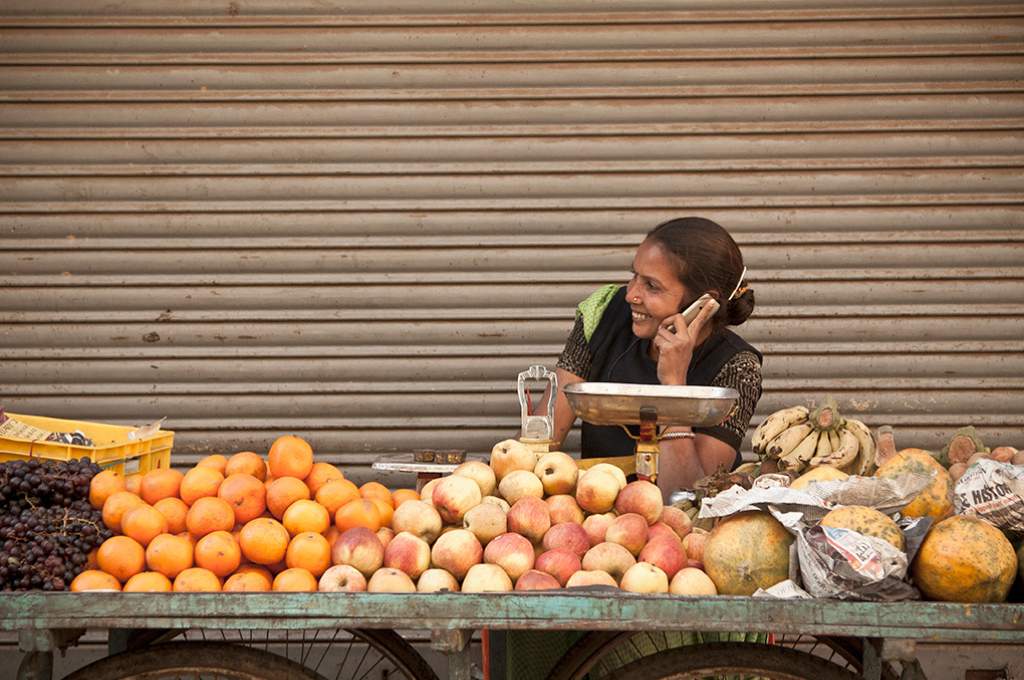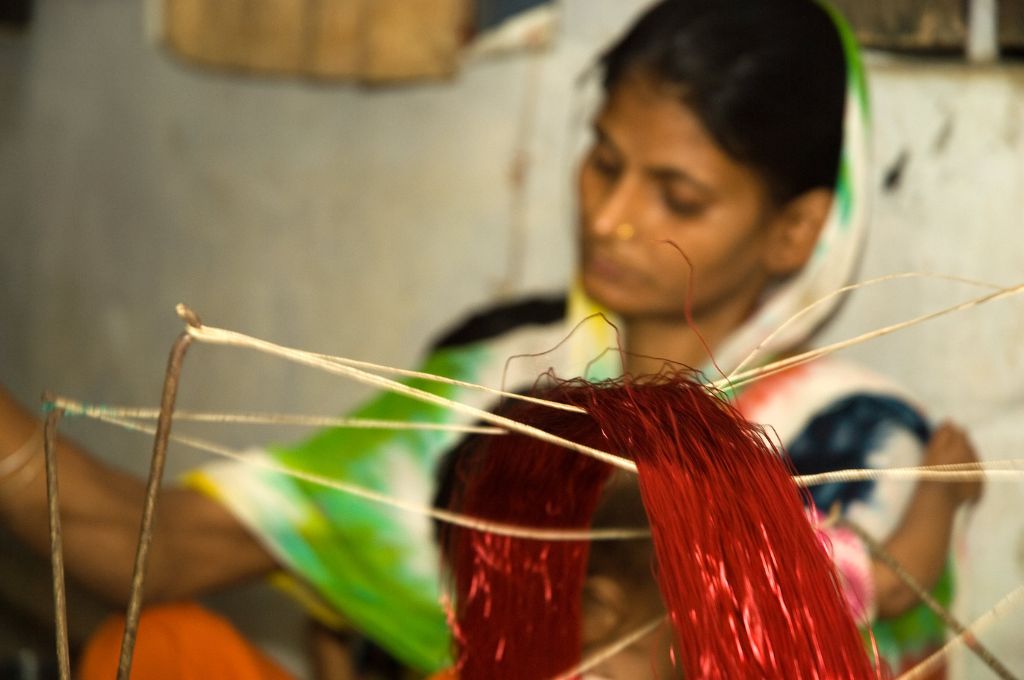Edited transcript of the episode:
0.22
Smarinita: The female labour force participation rate, or FLPR, measures the percentage of women actively engaged in the workforce. For years now, policymakers have been digging into the ups and downs of these numbers to figure out what’s going on and what’s driving these changes—is it the economy, society, or is it just certain policies? And while there is much talk about creating employment opportunities for women and the feminisation of the workforce, what often gets overlooked in these conversations is that gender norms and stereotypes play a key role in deciding who works and who doesn’t.
Joining me today on this episode of On the Contrary by IDR are Gayathri Vasudevan and Manak Matiyani. With Manak and Gayathri, we’re going to talk about women in India’s workforce—where they’re working, what kind of opportunities they have access to and which ones they don’t, the societal norms that hold them back, and what needs to change when we address these issues.
Gayathri Vasudevan has worked extensively on issues of labour, gender, and employability. In 2006, she co-founded LabourNet, a social enterprise that aims to enable livelihoods across the informal sector in India. She is also the co-founder of Sambhav Foundation, an organisation dedicated to empowering women, youth, and differently abled individuals—providing them with knowledge and skills and linking them to livelihood opportunities.
Manak Matiyani is a feminist and queer activist who has led programmes, campaigns, and organisations that work on gender-based violence prevention and specifically engage men and boys on issues of gender, sexuality, and violence.

Hi Gayathri, Manak. Welcome to On the Contrary by IDR. I’m looking forward to getting your perspective on this important topic of women in the workforce, and the role that gender norms and masculinities play.
Gayathri, if we could start with you. Could you explain to our listeners what the labour market looks like for young women in India today?
00.36
Gayathri: Thanks, Smarinita. I’m going to restrict my response to young women between the ages of 18 and 30, but I will very briefly refer to the 30–40 years age group too. India is a highly localised labour market. There is the rural, peri-urban, and urban labour market. The one good thing that has happened is that education levels [of women] are rising in India—women are finishing 10th, 12th, and even graduating. However, when they enter the labour market, there’s a huge drop. And this is because if you look at where there is concentration of work—in all the industrial estates and the logistics boom has caused warehouses to come in—wherever there is a larger number of people [overall], women come into the labour market [in greater numbers]. The South and West [of India] are feminising a lot more, wherever they have large numbers. Shop floors in manufacturing are feminising, warehouses are feminising, and so on. But it also means that women have a very short window of working life. That means that when they’re 18–23 years old, they have a working life, and then they are out of the labour market by 23 to 25, which is why I said age becomes very important for women. What happens to a girl who has been working and independent for a few years, oftentimes away from home because she may be a migrant, and then has to stop working? It’s almost like she has come for a holiday, and she has to go back and live her life where she has to [once] again go back to [following] traditional gender norms. It is very clear that there is no path of growth for them. And if there are [growth opportunities], they are so few that they are almost negligible.
04.06

Smarinita: So, what happens after they turn 23 years old?
04.08
Gayathri: I think as a nation, we haven’t really thought about it. Our entire focus is on getting the young woman out [for the first six or nine months of her working life], because it’s the first job that we’re all really worried about. And if she’s good, the job gets extended by three or four years. So, fundamentally, from the perspective of her family, she’s gone there [to the workplace] to earn money for her wedding. From the company’s perspective, I don’t think there is a lot of thought as to what will happen to her after that golden period of 23–25 years. Many women actually go back and become what I would call subsistence entrepreneurs—they try their best because they don’t want to relinquish the economic freedom that they have.
But they become workers for someone else, because they don’t own the land or the kirana shop [they run]. They don’t own it, but they probably manage it and they deliver on it. And that I think is also very problematic, because we haven’t thought about how that will grow as a market.
05.15
Smarinita: You just touched upon the availability of opportunities in the local ecosystem, which are largely only accessible to men. Can you shed light on the kind of opportunities available to men versus women in the workforce? And then, Manak, we can have you speak to that as well.
05.28
Gayathri: Let me start with one thing. Today, electricity and water are two things that are going to reach every household and every economic institution in every village. That means somebody has to maintain water and electricity—plumbing systems, pipe systems, solar and ‘normal’ electricity, renewables in whatever form, etc. Now these [jobs] are completely male-dominated. I feel these are roles women can also perform because a lot of it is maintenance. It is not all about installation. We can create women crews to do painting, plumbing, electricity work, especially because they have not migrated out. To create job opportunities—gig opportunities—platforms are needed. [When it comes to] women’s workforce participation, we are not focusing on what we need to do; we are asking ourselves what is easy to do and feminis[ing] what is convenient. There’s nothing wrong with it. But I feel we can’t be this lazy.
06.46
Smarinita: Thanks, Gayathri. Manak, if I can come to you, what have you been seeing in the way both young women and men access the workforce?
06.51
Manak: Sure, thank you. A lot of my engagement with young people is through programmes—direct conversation and engagement. And I think what Gayathri was saying about the kinds of jobs that are much more easily available to men is absolutely true. And the reason seems to be that larger, even private systems— such as an Urban Company or any other companies that are creating these kinds of crews—think of women as a much bigger liability. Instead of thinking that a man coming into your house is a threat to somebody who is in the house, it is reversed. Now you have to provide additional systems for [women’s] safety. And a lot of times, companies will not want to invest in ensuring or even having to think about the safety of people who are in their system. Especially for contract workers, things such as sexual harassment policies or safety guidelines don’t exist. And that is always a big deterrent because the managers, the people up the chain in gig work and similar systems, don’t want to think about the safety of people who are not employees. These are just people who are on a very, very short-term contract—typically [working as part of] a target-based model. You [the employer] don’t even want to bother with thinking of what that person [the contract worker] needs. So, I think that entry into a gig-based system is at your own risk, constantly. And that creates a lot of inequality in terms of the ability to access and exist in that kind of system. [For example], whether you can drive late at night, whether you can go into random [people’s] houses, and how that is going to be seen in your own household and community when you walk into an unknown person’s house every day to provide a certain kind of service. These are the kinds of inequalities that exist.
A lot of opportunity also depends on what your caste or community background might be, because of which you might have much lower access to a safety system.
In addition, of course, is [the fact] that since men’s and boys’ education is typically prioritised in the household, then they do have this additional expectation to use their education to find some kind of a white-collar job. [These are getting] more and more scarce. And that is the other situation where the gig economy seems like a little bit of a step down. There is that additional thought around your own macho, masculine image, that “I have done something [completed education], and I’m still having to do this kind of work.” And that definitely plays on the minds of men.
I also think entrepreneurship and entrepreneurial opportunity is something important to think about. A lot of that [opportunity] also depends right now in this culture of what your caste or community background might be, because of which you might have much lower access to a safety system—for example, the ability to take out a loan or to actually be considered [for a job], etc. And I think that also plays a role in how even amongst men, different men might be able to access or enter the system differently and puts women at a much lower [level of consideration]. They will not be considered for loans, for entrepreneurship, and will have to access some kind of specialised scheme, etc. So, this is the range of dynamics that people, and especially women, deal with in the workplace.
09.55
Smarinita: Manak, you’ve touched on some crucial points—particularly the safety of young women—and Gayathri, that’s one of the things I wanted to ask you. Painters and plumbers have to enter people’s homes. And for women to take up these jobs raises safety concerns. Families might have a problem ‘allowing’ women to work in these roles. They may instead be more comfortable with certain jobs, such as those in kirana shops and restaurants, which are viewed as safer due to their more public nature. Basically, what I am saying is that social and gender norms on what women should and shouldn’t do play a key role in the kind of jobs women even have access to. And understanding these different nuances, then, is crucial to how we approach labour force participation numbers.
10:35
Gayathri: Smarinita and Manak, you hit the nail on the head. While I said it is important, let me talk to you about my failure, which is exactly where you hit. We [at LabourNet] didn’t even try [to train women for gig work at home]. We tried it with auto service technicians. We said, “Let’s train women to be auto service technicians because there is a boom.” Be it EVs, two-wheeler, or four-wheeler vehicles, we thought that it would be a great opportunity for women to be in a different occupation. And that’s where we hit a roadblock. When there is a larger number of men in a workspace as compared to women, women are worried, [their] families are worried, and the workspace is not prepared. What Manak said about safety is bang on.
Where I was talking about [women being] electricians, plumbers, painters, this model was actually not even [conceived of] in urban areas. I was talking about rural areas. In rural areas, you don’t have the personnel—it’s a missing middle. The men have migrated, and it’s economically viable [to have women work]. India has created a large self-help group (SHG) cadre. The microfinance industry has actually stood on the back of the self-help group movement, which has been created over the last 40 years. And today, it’s a booming impact investment sector. We need to innovate and really take this [movement] forward. I want to go back to one of the things that Manak spoke about, that is, access to capital. For women, access to capital seems to be linked to joint liability groups. Everybody [the banking ecosystem] says, “You know what? Come as a group, you will each indemnify the other, and only then we will lend.” Why is it so only for women? It seems to be almost like we’ve said that women by themselves cannot guarantee it [repaying the loan]. They need somebody, they need a co-collateral, which is coming from a husband or a father or a brother. And I think that’s a huge, huge mindset deterrent. If I was to address your point straight on, Smarinita, it is a problem, right? It is a safety problem—no doubt about it. But if it is done in large numbers, because you have the self-help groups, that means you actually have a way of ensuring equipment and tools. And working capital is taken care of, because you’ve created that structure. So, everywhere there are services. If you look at urban slums, they are unclean. Primary schools and primary healthcare centres are not well-maintained. We can create a cadre [of women to work in these], which nobody is curating. But you need capital to [do this]. So come up with innovative ways [to find] capital. So have innovative ways in which we’re going [to find] capital. Do outcome funding but do it intelligently.
13.41
Smarinita: This whole thing about leveraging SHGs and focusing on maintenance [work] as employment opportunities sounds great—it seems to offer so many possibilities and solutions. Manak, are you seeing other solutions where there is much more equitable participation of women in the workforce?
13.49
Manak: I am not seeing other very big solutions towards suddenly equalis[ing] the workspace. There are interesting pockets of research and work that are being done. So recently, Zoom commissioned the research on hybrid workforces and women’s participation in the workforce. And what was interesting was that the research revealed how older women, above the age of 35 or 40, would pick working in a hybrid or a home-based kind of remote work model more readily than younger women. And the reasons behind this varied, but the really clear, bang-on ones were around the kind of freedom that is available to women to be able to work at home in peace, if they are in a hybrid workplace situation. In jobs such as call centre work or positions where you require a computer to work, having access to the necessary technology is a must. However, workplaces don’t always provide this technology for work-from-home situations, particularly in hybrid set-ups where employees are expected to have their own [equipment]. This can pose challenges for people in entry-level kind of jobs. The other interesting thing [that was brought out by the research] was that, for a lot of younger women, the idea of work was tied to the freedom to go out of their houses and actually be elsewhere, to be able to get out and make their own lives. That was missing [in a work-from-home set-up] and was a big component of being able to finally be part of a workforce where you’re supposed to go out of the house. And I think that was really important to younger women who were perhaps not married or newly married. There are pockets of information that reveal interesting data about patterns of what kind of a workforce women might choose, what kind of work situations and workplaces might be preferable to women of different ages.
But we were also discussing SHGs. I have experienced working with organisations working in rural areas. The SHG model, which is enabling a collective form for women and men (but mostly women because there are more women’s SHGs and collectivisation interventions than men’s), involves being able to move from being a labourer under employment guarantee schemes to actually becoming contractors because they can take a loan from the SHG. And I think it’s very clear that that kind of shift is easily possible. It is women who can pick up a loan from their own SHG, then learn how to be contractors of that job, and then hold government contractors accountable for the quality of the work that they’re doing in their own village. All of this is easy to do, except that basic access to capital is not available. This is largely in the social entrepreneurship space where there are loans available—microfinance loans to women farmers—but it’s always in that kind of niche space. I do wonder what it would take for a mainstream loan or lending system to actually start considering women as big clients and customers and to create systems for that. This is the kind of change needed in terms of the mindset of people who are providing that kind of capital.
16.55
Gayathri: Absolutely. What I feel very strongly is that we have to tap into value chains. For example, government contracts have to buy Dulux paint, they have to buy Asian paint, they have to buy Ashirwad paint, they have to buy Sintex tanks, etc. So, the value chain is male-dominated. For example, we did a small pilot with AkzoNobel to create women paint distributors. First, we trained them as painters. The person that runs the kirana shop does not own it. That was a big discovery, right? But for the system to recognise it as a big discovery led us to create 100 paint distributors. It doesn’t sound logically right to me. Women as MGNREGA workers is well known, but women as contractors is not. And it’s the same job. They can be unskilled here [as labour], but suddenly they become skilled there [as contractors]—how does that happen? It doesn’t make sense, right? So, I think that those are the places where we need to go hard with value chain. The pipe comes from Astral or from Ashirvaad, but I’m saying go to the company [and question them], “Why are we only looking at [women as] shop floor [workers]? Why are you looking at only women chat executives and telecallers? That’s a very small workforce. My larger workforce [women workers] is here, so open it [other positions] up for the larger workforce.”
18.40
Smarinita: What’s stopping companies and businesses from doing this? Is it a lack of knowledge or understanding that women could actually be kirana shop owners or plumbers? Is it safety concerns, is it mindsets, a lack of imagination—what is it?
18.50
Gayathri: I think it is about the worry that we’re going to spend more. There’s a huge worry at the back of the companies’ minds about the cost of acquiring a woman. There have been studies, for example, at Zomato, where the cost of acquisition for a [female] rider is 10 times that of a male rider, right? That cost of acquisition is a big worry, because you have to change norms across the board for it to happen. I think the impact investor group is not innovating enough. Because their impact investing is needed to be innovative. You need to see where the market is not growing. If impact investing is going where the market is growing, it actually loses its sheen. Philanthropic money should be catalytic money. And today, we have 2 percent CSR, which should allow it [innovation], whereas philanthropic money is now becoming money that is safe. I am not for one minute saying ‘don’t audit’. But if everybody refuses to take risks, I don’t know how you’re going to increase it [innovation] in the next two decades.
20.12
Smarinita: Manak?
20.19
Manak: The space that I work in is the mindset. And so, my approach to it is always centred on what needs to change in how the companies, the executives, etc., think. I have worked very little in the private company ecosystem, but what Gayathri just said about the purpose of philanthropic capital is that, I think the moment you switch a project from being a mindset change or a behaviour change project to an economic participation kind of project, there is a demand for that much more solid research, [making everything] foolproof and the exact calculation behind even making a case for that kind of grant to be given. So, this whole ROI (return on investment) system—if you require a big grant for an economic participation or livelihoods participation project, the moment the grants get bigger, the safety nets shrink and you cannot take risks. Before you start the work, you have to commit to the kind of success that you will show. We assume and we work with the assumption that private capital will always follow profit. There is no logic to say philanthropy capital, CSR capital, etc., should take risks, unless it is big-market and return-oriented risk. They are increasingly becoming more and more safe—make a building, make a school, make a toilet, that kind of category. That is, the capital that should definitely be available for risk-taking to be able to switch the market.
My increasing demand or request to philanthropists is that don’t do your value-based philanthropy work only [with]in the philanthropy system because you also sit on your own business empires, boards, and trusts. That is also where the values need to go back from the philanthropy space. It’s not like you will be a cut-throat capitalist in that [philanthropy] room. And you can be a hardcore philanthropist and human rights person in this [capitalist] room—mix those two. And we need to take some of the learnings and values from philanthropy work—the ability to encourage people to take risks, to make capital available to what seems not-marketable. There is no point in having philanthropy, capital-only service relief [to fulfill] the basic needs of people, if it’s not going to allow a change in the power structure [to promote] being in control of your life instead of being dependent.
22.44
Smarinita: What I’m hearing you both say is that while opportunities in the workforce may exist, they often aren’t viable for most women. In addition to the usual constraints around access to capital, safe working conditions, or the gender-based stereotyping they encounter, women also often get locked into roles that society deems right for them.
So, in a sense, it’s essential to look beyond just FLPR. What we need is for businesses and policymakers to expand their imaginations and to create opportunities for women that can also help chip away at these existing social constraints around whom should they work with, where can they work, at what stages of their lives, and so on. Because unless it translates to changes on the ground, looking at FLPR data year on year will have little meaning for working women in India. It will just be another data point to report.
—
Read more
- Rising female work participation signals stressed livelihoods, not progress
- A major economic challenge
- What’s going on with India’s labour force participation?
- How many women does India’s manufacturing sector employ?
- Empowering women: Unveiling progress in employment and economic participation
- Why are Indian women struggling with the gig economy?
- Harassment, discrimination, extra burden: Women in gig economy






